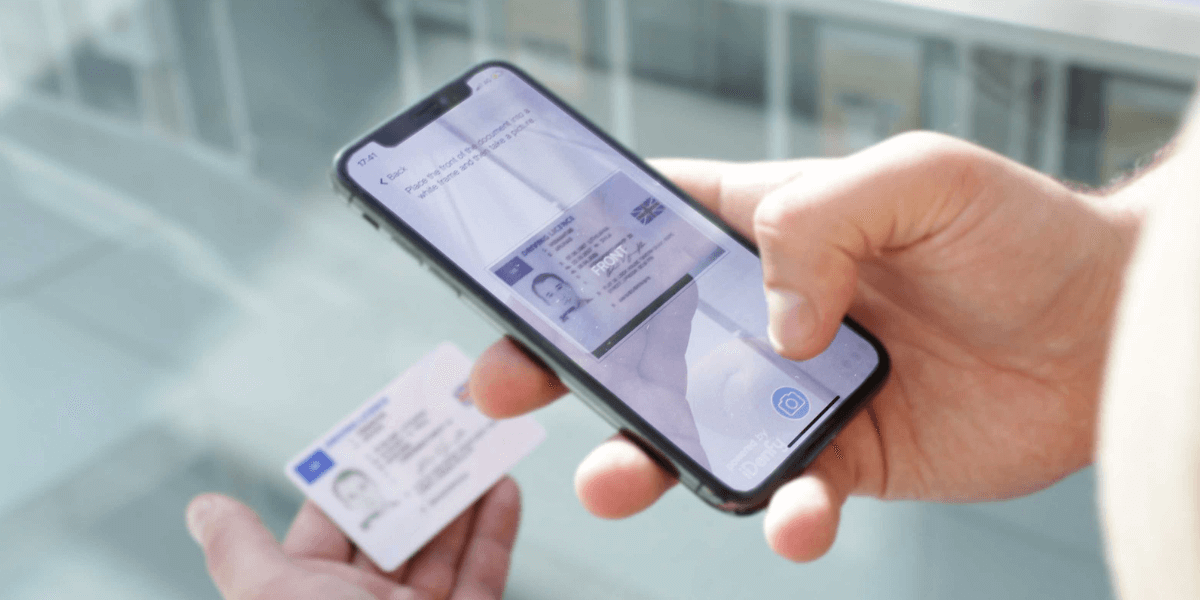Verification, in general, describes the act of confirming the existence or accuracy of something. In the meantime, identity verification specifically involves validating an individual’s personal details against real, physical human attributes. However, today, this process still remains a challenging task for banks and other financial institutions.
The rise of AI has set the world apart into two parties: criminals who leverage technology to launder funds, create deepfakes, and breach data, and the good guys who use advanced AI-powered software to create new methods for more secure transactions and data processing practices.
“Digital” refers to computerized technology, particularly the Internet. When discussing the verification of digital identities, then, are we relating to the verification of the digital identity of an individual, or are we using digital solutions to verify someone’s identity?
In the realm of online banking and other industries that operate fully digitally, digital identity verification is the method through which businesses ensure that a customer’s claimed identity is legitimate. This is achieved by scrutinizing personal information and data associated with an individual.
An identity can be a series of specific claims that describe an individual. They may comprise fingerprints, date of birth, ethnicity, and other permanent traits. Semi-permanent traits might also be involved, such as eye color, name, weight, and height.
But what else is there to know? We get into it down below.
What is Digital Identity Verification?
Digital identity verification is a process designed to validate an online identity, ensuring that individuals with digital identities truly exist. This means confirming their claimed identity and examining their background in order to prevent fraud and mitigate risks while ensuring compliance with Know Your Customer (KYC) regulations.
Many businesses, including regulated entities, such as cryptocurrency platforms or real estate firms, use digital identity verification to provide services and securely conduct transactions with customers worldwide. Such a verification approach allows companies to remotely conduct customer onboarding and minimize paperwork while reducing the hassle for internal compliance teams who are obliged to assess identity documents for standard manual KYC procedures.
Common Use Cases of Digital Identity Verification
Some scenarios where businesses integrate digital identity verification involve the following practices:
- Ensuring KYC and Anti-Money Laundering (AML) compliance within financial services.
- Conducting age verification for age-restricted products or services, such as adult platforms.
- Detecting fraud and crime, including money laundering or attempts to bypass the KYC process through fake documents.
- Verifying new account openings during user onboarding, for instance, when new users register for an account on a fintech platform.
- Confirming new player identities on iGaming platforms.
Related: KYC and AML Compliance — Key Differences and Best Practices
Key Methods for Using Digital Identity Verification
There are two primary methods for conducting the digital identity verification process: data analysis and identity document analysis. Here are both approaches explained in more detail:
- Data analysis consists of verifying an individual’s identity data, such as name, address, or phone number, by cross-referencing it with data sources like electoral records, credit bureaus, and census information.
- Document analysis involves checking images of government-issued ID documents, typically captured using a phone camera, to assess the authenticity of the document. Later on, the software compares the image with a selfie for liveness detection, ensuring that the presented document matches the person who is verifying their identity.
To put it simply, digital identity verification is essential for ensuring compliance and preventing fraudulent accounts. However, if the analysis causes inconvenience, customers can abandon the onboarding process and move on to the next platform where the user experience is more pleasant.
An effective identity program balances speed and security, meeting business and regulatory needs. Companies achieve this by employing a risk-based approach to verification tailored to different risk scenarios. That means low-risk customers go through a more straightforward KYC process while high-risk entities verify their identity with additional checks and more friction added to the process.
Related: Top 5 KYC Challenges and How You Can Overcome Them
Why Verification for Digital Identity Became Necessary
Nowadays, just about every industry is transitioning to a digital model. Whether they are in the retail, gambling, travel, payments, or banking industries, businesses use digital infrastructure to connect consumers with whatever they need immediately.
Still, most organizations depend on checking physical identities. For instance, in-person identity verification remains necessary when you apply for loans or new bank accounts, among other things. In the modern digital world, access is limited by this, which doesn’t scale. Conventional approaches to verifying identities aren’t appropriate anymore.
The verification of digital identities is a natural progression. They can expedite the process while taking away obstacles like geographical boundaries. Having said that, it does come with its fair share of challenges and risks.
If you are not verifying personal identity, how can you determine if an individual is the person they are claiming to be?
More services being offered online results in more data about consumers. The more data that is created, the more it is misused and mismanaged. We regularly hear about data breaches almost on a mass scale. It’s almost as if these instances have become normal rather than an exemption.
With all this data get leaked, it isn’t hard for a fraudster to pretend to be someone else by hijacking an account or using a credit card that isn’t theirs. Fraudsters capitalize on the transition to digital services to exploit specific vulnerabilities that come with identity verification. Companies struggle with the issue of how identities can be verified online.
Taking Advantage of Digital Identity Verification
Verification of an individual’s real identity is what risk management comes with. Digital identity verification services are in need that are smart enough to validate the individual.
Digital identity verification can be defined as a process that confirms an individual’s identifying traits while verifying who they claim to be using modern technology.
All components need to be considered when verifying someone’s identity, iDenfy is supplying modern, automated identity verification technology with human supervision to confirm an individual’s identity.
This blog post was updated on the 1st of July 2024 to reflect the latest insights.




